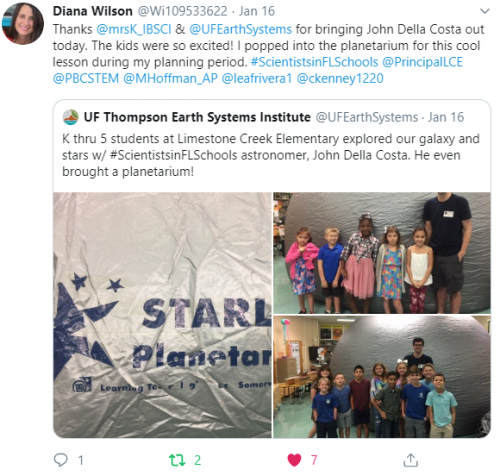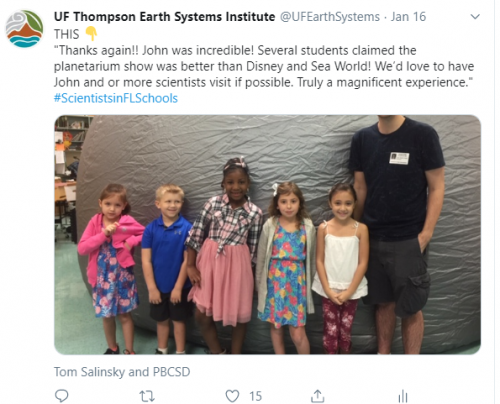What’s the best way to teach K-5 students about our galaxy and stars? Show them!
That’s just what scientist, John Della Costa did for Limestone Creek Elementary students in Jupiter, Florida. Della Costa, a recent astrophysics graduate from the University of Florida, has honed several space-related presentations for K-12 outreach using a portable planetarium called the Starlab.
STEM teacher, Julia Woertz, communicated ideal topics for discussion with the scientist, who was then able to tailor the content to meet the levels of each grade who shuffled through the Starlab throughout the day.
Word of Della Costa’s presence on campus moved so quickly that several teachers peaked in during their planning period for a chance to enter the Starlab to learn from the astronomy expert.

FLORIDA STANDARDS COVERED:
- SC.1.E.5.1: Observe and discuss that there are more stars in the sky than anyone can easily count and that they are not scattered evenly in the sky.
- SC.3.E.5.1: Explain that stars can be different, some are smaller, some are larger, and some appear brighter than others; all except the Sun are so far away
- SC.4.E.5.1: Observe that the patterns of stars in the sky stay the same although they appear to shift across the sky nightly, and different stars can be seen in different seasons.
- SC.5.E.5.1: Recognize that a galaxy consists of gas, dust, many stars, including any objects orbiting the stars. Identify our home galaxy as the Milky Way.
For more information on how Scientist in Every Florida School can deliver dynamic and innovative ways to target Florida standards, schedule your scientist today: Request a Scientist Form.